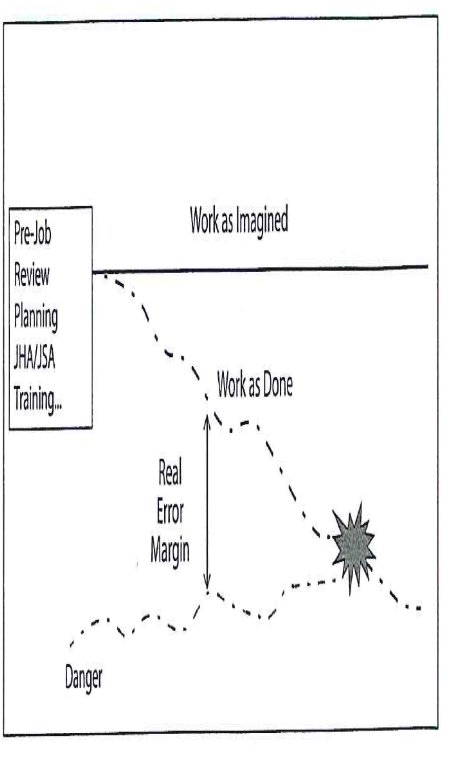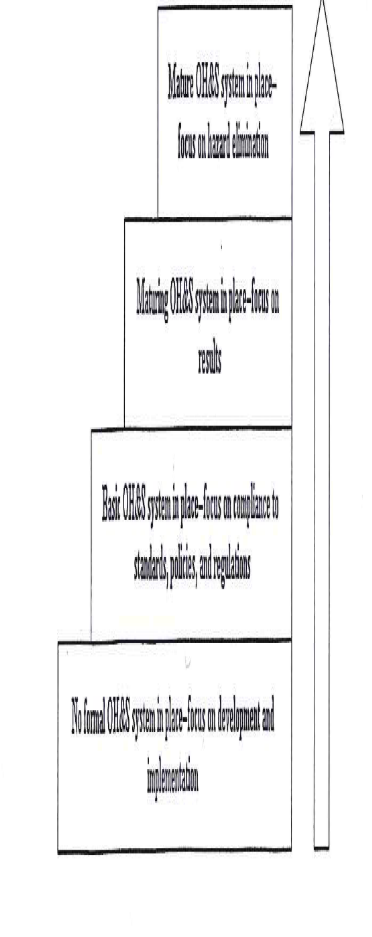Safety Management Systems - Discussion and two essays
OSH 410
Week 1 Lesson 2
The Case for Systematic Management
Safety provides many value propositions that benefit the workforce and the company concurrently. These include reduced worker’s compensation costs, increased morale, increased productivity, improved market value of the organization, recruitment of more qualified personnel, and in the end the bottom line. A comprehensive management system facilitates the success of safety in these values propositions and in many others. But a system is vital for sustainable leadership efforts.
Good leaders begin preparing for their own absence on day 1. They begin developing the skill and talent of those around them by empowering them to make decisions as their skills and talents develop. They develop the readiness of their team and begin to delegate the duties to subordinate teammates. A system makes this possible. An established system provides a clear path to the necessary tasks and divides the skills required in a way that allows a good manager to focus talents and skills in the most efficient places. So, as safety personnel are promoted, leave, or are absent for whatever reason, the team is more cross functional and able to fill the gap.
This also means that gains made by the organization are not lost as safety management personnel change, or the structure of the organization changes. One of the most frequent concerns of a workforce, when a proper system is not in place, centers on how long the new safety person will be at the organization. This impacts buy-in negatively. It is like starting over every time the position changes.
A third solid reason for an established management system is that the learning curve for any new safety professional is reduced. Safety is always based fundamentally on hazard recognition. Without this basic investigation skill, a safety professional is not adequate at any level. This skill does not change, but application in a new environment always presents new learning curve challenges. This is reduced with an effective management system. It ensures program continuation on a more even scale.
Comprehensive management is a must for establishing a positive safety culture. Comprehensive means that it covers all completely. We have already identified the core duties of safety as being to identify hazards, assess risk, investigate and plan countermeasures, implement change (counters), and then to assess the effectiveness of our counters or change. However, this hints at looking only at failures. What about the positive occurrences and the patterns they present? Can they produce organizational practices that root out more and more failures? Let’s first look at the core duties, the benefits of a systems approach, and then examine a skeleton for management, or a standard like OHSAS 18001, or ANSI Z-10.
The first core duty relies on employee participation because safety as a department or as an individual cannot possibly uncover all of the hazards that do, can, or will exist in an organization. Safety professionals are not always a master of the job duties or technical skills that they are expected to manage safety for. The real experts are the people that perform the job tasks on a routine basis. It is the job of the safety professional to obtain the proper information to perform core duties. This means getting the information from the worker. It is done from interviews, observation, learning the job task, and working with engineering on the designed work process.
Safety is truly the controls between hazard and that which is to be protected. It involves two distinct strategies learned in OSH 261. They are “accident prevention” and “injury prevention.” The control matrix looks like this:
 ANSI B-11-2008
ANSI B-11-2008
Safety must identify the designed work process and then identify how work is really done. The goal is to move the gap between these two closer together and to then places controls, either psychological (accident prevention) or engineered (injury prevention) in place between the work and the risk. Redundant controls are preferred. The more redundancy exists without unduly hampering work efficiency, or increasing the gap between designed procedures and actual procedures, the better safety performs. This is due to human behavior to take the fastest, easiest, or most efficient perceived path. The figure below shows this theoretical gap that is at the center of Conklin’s Human Performance Concept.

Reprinted from:Conklin, T. (2012). Pre-Accident Investigations: An Introduction to Organizational Safety. Burlington, VT.(p.72).
The First Step
The very first step is to identify the hazards present at the location or various locations and which OSHA, EPA, DOT, or state regulations apply. The safety professional should then begin to look at the national consensus standards, permanent variances from other organizations, and letters of interpretation to find out what applies to the hazards and situations present.
A hazard analysis then can guide the development of the system by helping to identify the needs of the organization from a compliance standpoint for safety.
Core Programs
Since core programs focus on the primary services or outputs that safety performs for the various customers, or the core duties, the OSH 410 course will focus on the core programs by producing the supporting processes. Establishment on culture relies upon these programs. The identification of hazards is the first core duty of safety. It relies heavily on employee participation. We will focus on a reporting program and an employee hazard identification program as possible supporting processes for achieving this core duty. Analyzing hazards and failures is also a core duty. We will produce documents and discuss processes that are supporting to this core duty as well. Investigations and auditing will be addressed as supporting processes. Many key documents will be developed for the supporting processes that are covered.
Many more supporting processes are required to completely make the cored duties effective. Due to time constraints we will concentrate on reporting, employee hazard identification, investigations, and auditing. We will also explore management philosophy, program effectiveness audits, and leading and lagging indicators in order to provide system support.
Program Maturity
A safety manager that is establishing or modifying a management system must have a vision of where the system wants to be and also have a realistic picture of where it is currently and how to progress. The Kausek Management System Evolution Diagram provides a good visual model to program development in stages. Figure 3 shown below depicts management system maturity.

Reprinted from: Kausek,J. (2007). OHSAS 18001: Designing and Implementing an Effective Health and Safety Management System. Lanham, MD.(p.6).
The design stage is the very outset of program design and implementation. Once core duties are identified, supporting processes are designed and implemented. Forming committees that represent all levels of the organization are important. Building upon existing practices that are successful is a must in order to limit organizational change. Design must be practical and build upon associate expectations. The safety manager must have a vision of the system in general and a strong vision of leadership and management philosophy.
The compliance stage focuses meeting minimum regulations and on system supporting processes. Internal audits must look at compliance to policy and finding process shortcomings and non-compliance issues. Benefits at this stage rely on how well the previous safety management practices were implemented (Kausek, 2007). This is because documenting and formalizing processes and procedures can reflective of actual practices. Thus, organizations that were doing the right things previously, will not report much gain from a formalized system. But conversely, organizations with a lack of adequate safety management efforts, can report large gains. This overlooks the sustainability benefits as previously covered in regard to system implementation. They may not yet be realized through performance measures. Sustainability is reflected in success over time and change of management.
The effectiveness stage is next. Once implemented processes are in compliance with system design, the focus becomes results oriented. Measures are put in place to identify the most successful supporting processes as well as overall performance metrics. The best management practices of the organization and the system become evident. All others piggy back and resemble the keys to success.
Finally, the continuous improvement stage takes over. At this level the best practices of the organization become common to all facilities.



